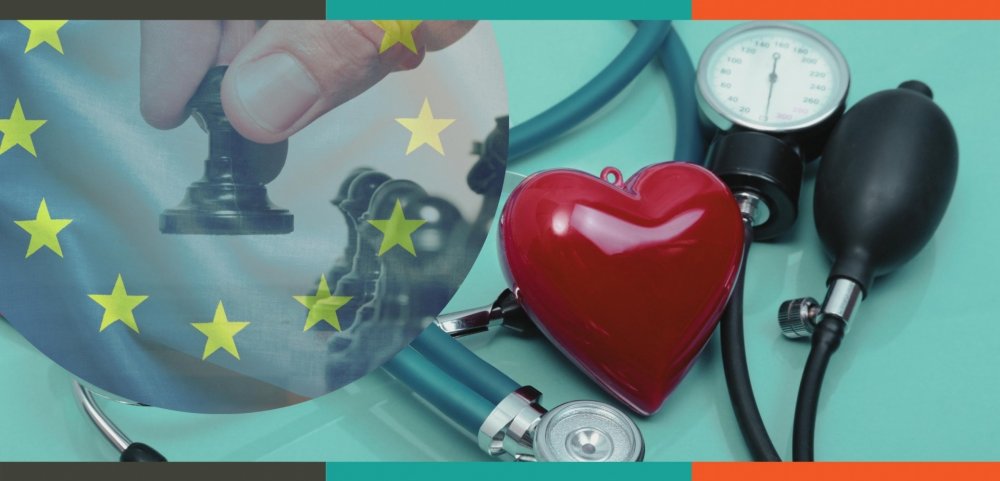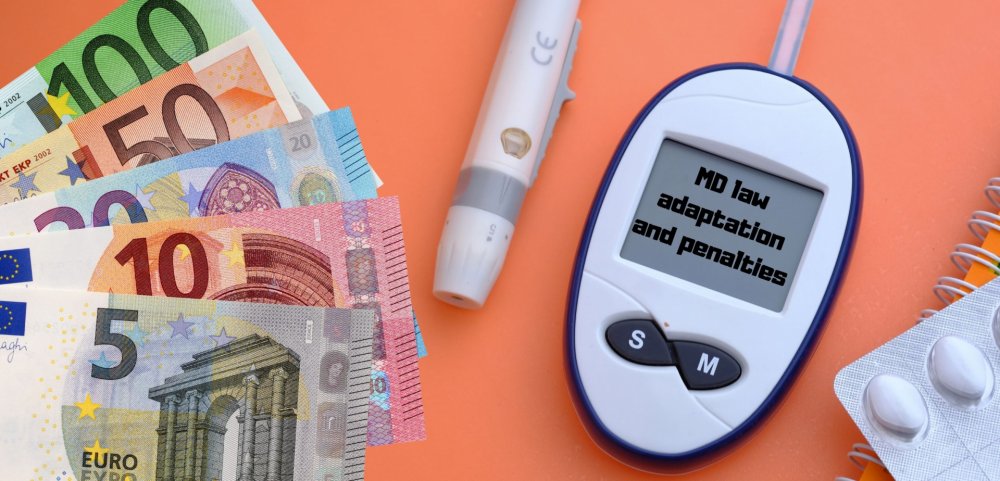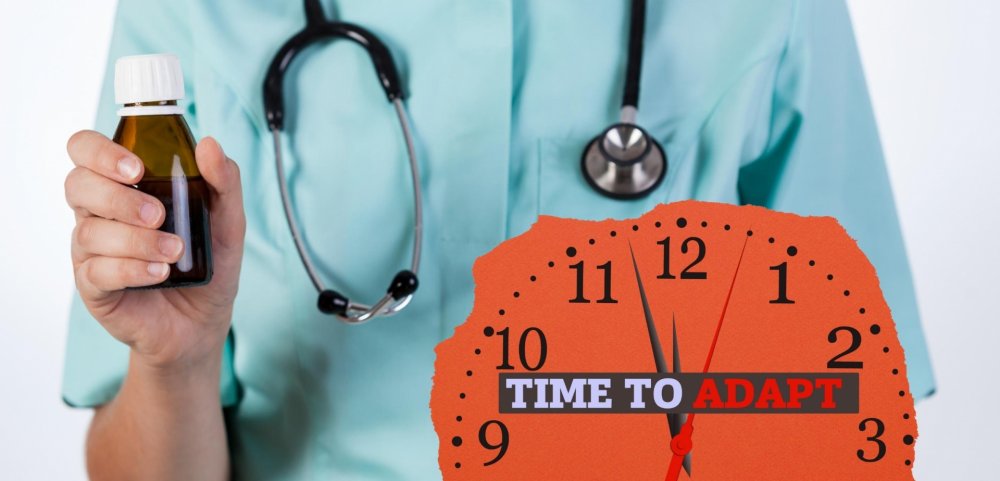How MDR affected legislation of medical devices in European Union Member States
The two European regulations on medical devices: European Union Medical Device Regulation (EU MDR No. 2017/745) and In Vitro Diagnostic Regulation (EU IVDR No. 2017/746) are directly applicable in the EU Member States, meaning they do not have to be transposed into national law, but are supplemented by different European implementing law acts and guidelines.
For a consistent and harmonized approach in MDR [1] and IVDR [2] interpretation within EU, an implementation taskforce group and transition subgroup were established by the Executive Group of the EU Competent Authorities for Medical Devices (CAMD). CAMD associates majority of national Competent Authorities (CAs) in the EU, which work jointly to enhance the level of collaborative working, communication and surveillance of medical devices across Europe.
Germany (chair and co-chair of aforementioned groups within CAMD), is one of the leading countries in Europe to undertake extensive work on the application of new EU legislation. Germany has established the National Working Group for the Implementation of MDR and IVDR (NAKI, Nationaler Arbeitskreis), involving federal and local authorities, manufacturers, trade representatives and scientific and medical associations. NAKI publishes reports and question-and-answer documents regarding national implementation of new MD legislation, available here.
The results of the NAKI’s work were taken into account in the Medical Devices EU Adaptation Act (MPEUAnpG) [3] introducing the new Medical Device Law Implementation Act (MPDG) [4] (replacing previous Medical Devices Act, MPG [5]) and the Medical Devices EU Adaptation Ordinance in Germany. Notably, the MPDG should be read as a supplement to MDR, which outlines how specific processes should be held in Germany. One of the unique requirements of German market (introduced by MPG and continued in MPDG) is the role of medical device consultant (Medizinprodukteberater) with an appropriate expertise required. Medical device consultants provide instructions on the MD use to professionals (experts) and are responsible for reporting of complaints or adverse events to the manufacturers. The MPDG has also extended the requirements for clinical investigations and the list of fines, with the maximum financial penalty up to EUR 30 000. Markedly, additional criminal offenses have been defined in the MPDG, including placing a falsified device on the market, which is a violation punishable by up to 5 years imprisonment.
Similarly as in Germany, an adaptation of the national French Public Health Code (FPHC) [6] was necessary due to the change in European medical device legislation. An Ordinance no. 2022-582 adapting French law to MDR (April 20, 2022) [7] introduced specific provisions regarding clinical investigations of medical devices, including the conditions for involvement of ethical committee and penalties. Financial consequences of non-compliance are more severe than in Germany, and may reach up to EUR 1 000 000 for companies and EUR 150 000 for a natural person. Nevertheless, the adaptation process in France is still in progress, and as such, further legislative novelties may be expected.
Transition to MDR is carried out a bit differently in Ireland. An Irish regulatory agency: Health Products Regulatory Authority (HPRA) is actively engaged in the development of MDR- and IVDR-related guidance documents through various EU working groups. The Agency has prepared a series of webinars regarding the practical applications of both EU Regulations (2017/745 and 2017/746), which are available here. Likewise the previously mentioned Member States, the legal basis for MDs have been updated in Ireland: the Irish Medical Device Regulations 2021 [8] came into operation in parallel with MDR. The new regulation clarifies the role of HPRA as Ireland's competent authority responsible for medical devices and confers the enforcement powers of HPRA to ensure compliance with MD legislation, along with the extended list of offences. It has not, however, affected the financial sanctions for offences, which may reach up to £100 000 in the case of a first time offence and up to £250 000 for any subsequent offences (according to Irish Medicines Board Act, 1995 [9]).
From May 26, 2022, the new Polish Act on Medical Devices [10] is in force, repealing the provisions of the Medical Devices Act of 20 May 2010 [11]. The new Act not only amends Polish law to the EU regulation on medical devices but also introduces stricter advertising requirements and significant changes regarding the amount of penalties and the rules for imposing fines on entrepreneurs. The extensive and restrictive system of financial sanctions reaching up to PLN 5 000 000 for specific violations has been widely commented in the industry. As a consequence of public consultations on the draft Act, the rules on imposing penalties have been slightly relaxed, yet the upper limit of fines remained unchanged. Advertising of medical devices will be subject to similar restrictions as for medicinal products, as the new provisions become applicable (1 January 2023). According to the new Polish Act, one cannot use the image of medical professionals or suggest such role of the person presenting a medical device, but also persuade children or their parents to purchase the product. Attributing to a device a function and/or properties that the device does not have, or giving a false impression as to treatment or diagnosis (and other functions or properties) that the device does not have, will be considered as misleading and may may result in a penalty a penalty up to PLN 2 000 000.
In terms of medical device advertising, Italy also departs from harmonised EU regulatory framework by implying prior ministerial authorisation for the advertising of medical devices not subject to prescription and devices intended for use without the assistance of a physician (Circular no. 0081386 of November 12, 2021 [12]). Such obligation raises some doubts on the compatibility of this national rule with article 7 of the MDR, that regulates the advertising of medical devices and does not provide for them any form of authorisation. Although debatable, the position of the Italian Ministry of Health, will most likely be adopted by the control authorities supervising the compliance of medical device advertising and the lack of prior authorization may possibly bring to legal liability.
Although the introduction of MDR and IVDR had a purpose of creating uniform regulatory framework for the EU medical device market, their technical introduction still requires several adaptations of the national legal frameworks in the Member States. The process of reflecting and implementing the EU legislation is still in progress, yet it appears that majority of Member States are prepared for the implementation of the new rules. In Poland, introduction of the two EU Regulations became a reason for significant changes in the advertising of medical devices, with high financial penalties in case of non-compliance. On one hand, such restrictive approach aims to protect patients against some unfair practices, but at the same time, it may limit the access to the knowledge of all new technologies for the lay persons. Indeed, some of the national law adaptations have not been received without criticism, but the practical applicability of the law established will most probably turn out over time.
If you would like to discuss the recent changes in national and EU legislation for medical devices in relation to your product, please do not hesitate to contact Health-Med team. Visit our services webpage to learn more of what we may offer as an Importer or Authorized Representative (EC REP) for medical devices.
[1] MDR: Regulation (EU) 2017/745 of the European Parliament and of the Council of 5 April 2017 on medical devices, amending Directive 2001/83/EC, Regulation (EC) No 178/2002 and Regulation (EC) No 1223/2009 and repealing Council Directives 90/385/EEC and 93/42/EEC.
[2] IVDR: Regulation (EU) 2017/746 of the European Parliament and of the Council of 5 April 2017 on in vitro diagnostic medical devices and repealing Directive 98/79/EC and Commission Decision 2010/227/EU.
[3] MPEUAnpG: Gesetz zur Anpassung des Medizinprodukterechts an die Verordnung (EU) 2017/745 und die Verordnung (EU) 2017/746 (Medizinprodukte-EU-Anpassungsgesetz – MPEUAnpG) Vom 28. April 2020 / The Medical Devices Adaptation Act-EU.
[4] MPDG: Article 1 of the Gesetz zur Anpassung des Medizinprodukterechts an die Verordnung (EU) 2017/745 und die Verordnung (EU) 2017/746 (Medizinprodukte-EU-Anpassungsgesetz – MPEUAnpG) Vom 28. April 2020 / Medical Device Law Implementation Act.
[5] MPG: Gesetz über Medizinprodukte (Medizinproduktegesetz), Ausfertigungsdatum: 02.08.1994.
[6] FPHC: French Public Health Code (Code de la Santé Publique-CSP), Last update: June 11, 2022.
[7] French Ordinance no. 2022-582 (April 20, 2022) : Ordonnance n° 2022-582 du 20 avril 2022 portant adaptation du droit français au règlement (UE) 2017/745 du Parlement européen et du Conseil du 5 avril 2017 relatif aux dispositifs médicaux.
[8] Irish Medical Device Regulations 2021: S.I. No. 261 of 2021 - Medical Devices Regulations 2021.
[9] Irish Medicines Board Act, No. 29 of 1995. Last update: 1 June 2022 (Act No. 8 of 2022 and S.I. No. 270 of 2022).
[10] Polish Act on Medical Devices: Ustawa z dnia 7 kwietnia 2022 r. o wyrobach medycznych (Dz.U. 2022 poz. 974).
[11] Medical Devices Act of 20 May 2010: Ustawa z dnia 20 maja 2010 r. o wyrobach medycznych (Dz.U. 2021 poz. 1565).
[12] Italian Ministry of Health Circular no. 0081386 of November 12, 2021.





